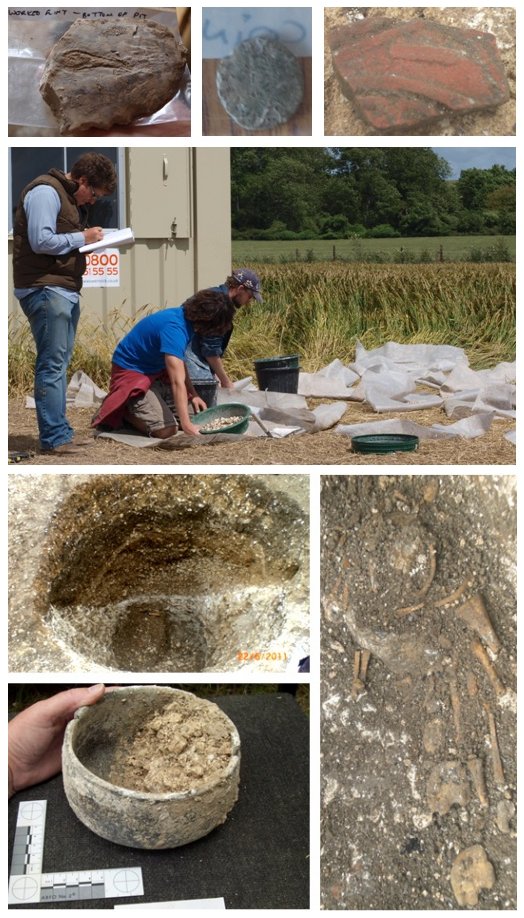
Day 16: Clockwise from the top left - flint object, Roman coin found with burial, Samian ware pottery, sieving soil, neonate skeleton, complete pot with residues of content, and pit cutting the banjo ditch.
Now that we are well into the second half of this year’s project, the hard work of many excavators is paying off as features are bottomed and revealing more special finds. Not all features have the typical natural chalk edge however. For example, a particularly interesting pit in area ‘A’ has been cut through the ‘banjo’ ditch, causing one side of the pit to show the many contexts within the ditch, while the other side is the normal chalk edge. Also, this pit (unusually) gets smaller towards the bottom; it is yet to be found if there is a special deposit its base.
Another pit in the same area has produced a large Kimmeridge shale slab. This was possibly building debris or some form or tableware, but further examination is needed. The same pit also contained an iron bill hook.
Other finds today included what may be an antler pick. In earlier prehistory, these would have been used to dig the ditches of monuments which were similar to the ‘banjo’ ditch (for example the ditch around Stonehenge). Therefore it is possible that it was used here for the same purpose, but at this stage in prehistory, the availability of metal tools may have allowed for an easier option. There was also some high quality Roman glass recovered from one of the house platforms, a large flint tool and two almost complete pots; one of which perhaps still held its original contents. This will hopefully reveal some of the ritual habits of the occupants of the site, and may also show what they ate or drank here.
As if these wonderful finds were not enough, the heroic team of environmental archaeologists have found an incredibly small coin in the soil in the area of a baby burial. Without their efforts, other small objects may have not been identified. The efforts of the finds team are also highly valued as the finds are being cleaned up and labelled for analysis. Now, with only nine digging days left, it is still expected that the site still has many more secrets to reveal.
Lauren and Zoe